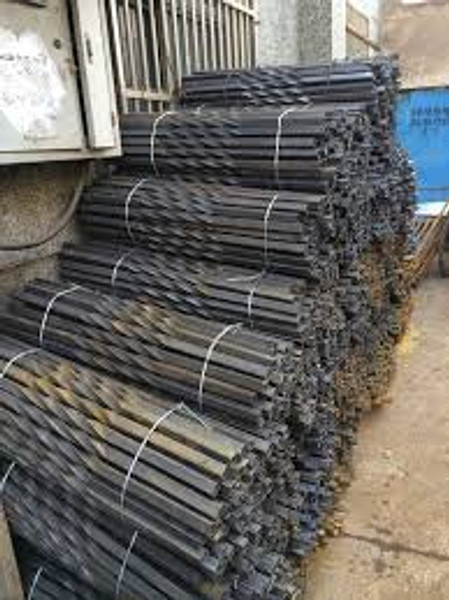ABOUT THE MATERIALS USED IN ORNAMENTAL STEEL MANUFACTURING
Posted by Pedro L. Sanchez on Feb 29th 2020
In the iron business there are several “sub- trades”, and depending on which trade are you in, it’s the type of material that you are going to be using.
For instance, if you own a machine shop, you will deal with specialized steels, if you are in the structural steel business you will deal with profiles and materials that are structurally rated, while if you are in the ornamental iron business as we are, you will deal with what is called mild steels.
TYPE OF MILD STEELS
Among what fits in the generic “mild steel”, are also some different type of alloys and processes that the determine the classification of the material commonly used for ornamental iron.
I am going to briefly explain each of them.
Wrought iron
People identify this term with solid iron, iron that is used to be forged into scrolls and bars, and feel that if a job is made out of thin material that is not “real wrought iron”.
That is why The Balcony Company advertises that its products are made out of wrought iron, because we use solid material for the balusters and scrolls in our ornamental iron.
However, we also use hollow material (not light gauge though), for posts and some handrails and horizontal rails in several of our products.
Generally speaking our company is devoted to offer heavy duty products that will last not one but several lifetimes.
What then is the original meaning of the expression “wrought iron”?
Wrought iron is a specific type of material that used to be produced for forgings, it is an alloy developed at the beginnings of the last century and that was totally discontinued in the early sixties. So technically, “wrought iron” does not exist anymore? We can’t say that, its just that that alloy disappeared in favor of better alloys used in the ornamental iron business.
In any city of the US, if you go to old neighborhoods, you will be able to find railings and gates mad out of “real wrought iron”.
Hot rolled steel and cold rolled steel
This classification points out to the type of process that has been used to produce the steel profile.
Hot rolled steel is rolled hot and cold rolled steel has been rolled at a lower temperature, this refers to the process of forming the steel into its final shape.
“Hot rolling involves the production of sheet metal from billets by passing the steel through rollers while above its recrystallization temperature to desired physical dimensions. Multiple passes through the rollers may be necessary to produce the final dimensions.” (Metal Supermarkets)
Cold Rolled steel has an improved surface finish and tighter tolerances compared to hot rolled steel. It is commonly used for parts requiring cold forming, such as crimping, swaging or bending. It can also be used for Shafts, machinery parts, bolts, pinions, gears, as well as in the creation of furniture, appliances and other consumer goods.” (Metal Supermarkets)
This link can give you more details about this different processes.
TYPE OF ALLOY
Regardless of the chemical content of steel, we have already established that the process by which is rolled into its shape plays an important roll on its appearance and properties. However, the chemical content is crucial to determine certain properties that have structural applications. We need to remember that handrails, for instance, need to meet the International Building code and berated for a certain side load. It is part of the structural engineers job to certify that the hand rail meets those codes; this is the reason why the specification of the material needs to be provided by the manufactured. The tables will determine the capacity of the profile used; and it is not uncommon that the structural engineer asks the manufacturer to upgrade the handrail to meet code requirements.
A500 is the most common alloy used in structural tubing in the US market, hot rolled. This link contains the data sheet for A500 steel; and that is what we are asked to provide on every project that is regulated.
Another commonly used alloy is the so called 4340, both for hot and cold rolled forming. Of course this is just a little bit of information on the extensive universe of steel alloys.
PROCESS CERTIFICATION
In addition to the type of alloy and the type of process it is important for engineers to get in black an white a certification that the process used to produce that specific batch of steel used in their project has been done following the proper standards that would lead to the desire result. For every batch the mills hire an independent certifier and it is their obligation to provide it to the distributor and through them to the final consumer.
